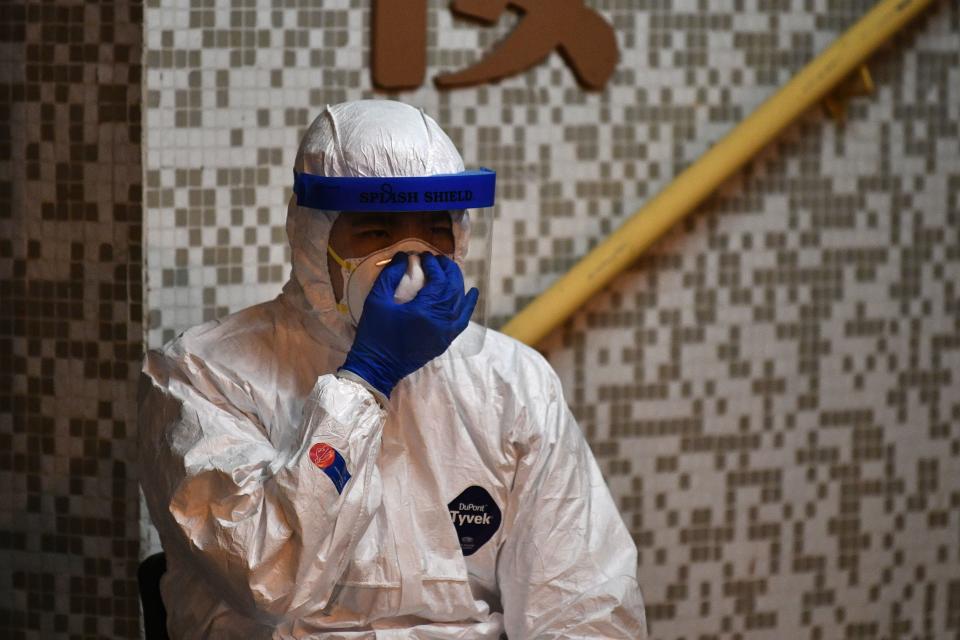Coronavirus officially named COVID-19

The deadly coronavirus has been officially named COVID-19.
Ever since the previously unknown strain emerged at the end of last year, experts had referred to it as 2019-nCoV.
Read more: Coronavirus’ ‘case-fatality rate’ could range from 1% up to 18%
The World Health Organization (WHO) announced its official name on Twitter on Tuesday, giving little rationale as to how it was selected.
COVID-19, deemed a “global emergency”, is the seventh strain within the coronavirus class that is known to infect humans.
Others include severe acute respiratory syndrome (Sars).
Sars, which killed 774 people during its 2004 outbreak, was named after its respiratory symptoms.
Like COVID-19, Sars caused flu-like symptoms initially, with severe cases succumbing to pneumonia. No cases have been reported since 2004.
Their similarities means the International Committee on Taxonomy of Viruses (ICTV) is calling COVID-19 “severe acute respiratory syndrome coronavirus 2” (SARS-CoV-2).
“The ICTV have determined it is the same species as Sars but a different strain of the species”, said Dr Nathalie MacDermott from King’s College London.
The coronavirus Middle Eastern respiratory syndrome (Mers) was named after it was identified in Saudi Arabia in 2012.
Mers went on to kill 858 people during that year’s outbreak, with a handful of cases still arising in the Arabian Peninsula every year.
When it came to naming COVID-19, the criteria has clearly changed since Mers was officially classified.
Read more: Coronavirus cases may ease in summer before re-emerging in winter, experts say
The WHO’s director general, Dr Tedros Adhanom Ghebreyesus, posted on Twitter: “Under agreed guidelines between WHO, @OIEAnimal Health [the World Organisation for Animal Health] & @FAO [the Food & Agriculture Organisation], we had to find a name that did not refer to a geographical location, an animal, an individual or group of people, and which is also pronounceable and related to the disease.
“Having a name matters to prevent the use of other names that can be inaccurate or stigmatizing.
“It also gives us a standard format to use for any future coronavirus outbreaks.”
More than 43,000 COVID-19 cases have been confirmed globally, of which 42,670 are in mainland China, according to John Hopkins University.
The death toll in China reached 1,016 on Tuesday.
Dr Adhanom Ghebreyesus added the development of vaccines and “therapeutics” is an “important part of the research agenda”.
With these taking time to develop, he stressed “we are not defenceless” due to “public health interventions” and the training of “thousands of healthcare workers”.
Pharma companies around the world are racing to develop a COVID-19 jab, with no vaccine available for any coronavirus strain.
Scientists have admitted a vaccine will not be ready for this outbreak, but could be up and running if the new coronavirus becomes a “pandemic” that “circulates around the world”.
In the meantime, the WHO stresses the importance of good hand washing to help stem the spread of infection.
Dr Adhanom Ghebreyesus also added the WHO requires $675m (£521.2m) to “support preparedness & response operations in countries”.
“We thank those countries that have contributed so far & we call on all those who haven’t to contribute urgently,” he posted.
“If we invest now in rational and evidence-based interventions, we have a realistic chance of stopping the #COVID19 outbreak.
“If we don’t, we could have far more cases – and far higher costs – on our hands.”

What is the new coronavirus?
Most of the people who initially became unwell worked at, or visited, a seafood and live animal market in the Chinese city Wuhan.
Wuhan, capital of Hubei province, has about 11 million residents.
While no one can say for sure where the disease came from, bats seem most likely.
The nocturnal creatures are also thought to have been behind the onset of Sars and Mers.
Scientists from Peking University in Beijing have suggested snakes may have been the “intermediate host” for COVID-19.
A team from South China Agricultural University have since found it could have “jumped” from bats to humans via pangolins.
Chinese authorities have confirmed COVID-19 spreads via droplets expelled while sneezing or coughing.
It is unknown whether the virus “floats” in the air or survives on hard surfaces.
Read more: Coronavirus cannot be cured by drinking 'garlic water', experts say
Infected patients develop flu-like symptoms, such as fever, cough and breathlessness.
In the most severe cases, victims succumb to pneumonia.
This comes about when a respiratory infection causes the alveoli (air sacs) in the lungs to become inflamed and filled with fluid or pus.
The lungs then struggle to draw in air, resulting in reduced oxygen in the bloodstream.
“Without treatment the end is inevitable,” said the charity Médecins Sans Frontières.
“Deaths occurs because of asphyxiation.”
The US Centers for Disease Control and Prevention has warned there is no specific treatment for coronaviruses.
If the infection triggers pneumonia, doctors work to combat the complication.
Pneumonia is generally caused by bacteria, which tend to respond to antibiotics.
When a virus is to blame, like 2019-nCoV, it may be treated via “antiviral medication”.
However Professor Peter Horby, from the University of Oxford, claimed there is “no effective anti-viral”, with treatment being “supportive” while the immune system works to fight off the virus.


